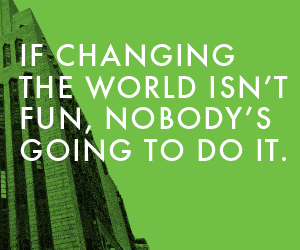In a discussion of art focused on land issues, Virginia MacKenny wonders if we are still able to remember the vital kinship between humans and the earth
The King’s Map,1 a large handcrafted silk map2 measuring 2.67 x 1.83 m, documents the travels of Francois Levaillant3 in southern Africa during the years 1781–4. It not only demarcates the places, rivers and mountains and the distances Levaillant covered,4 but also his camps, his hunting expeditions and, in 62 Papillons5 the flora and fauna6 in the locations he saw them. Made for Louis XVI of France in 1790,7 the map clearly links cartography and colonial power, but it is also a bio-geographical narrative of experience and one of the ‘first maps to indicate wildlife distribution linked to a specific voyage’.8 Levaillant for instance was ‘one of the last people ever to see a Bloubok or Blue Antelope, and one of his hunters killed one of the last ever recorded specimens near Swellendam’.9 The irony embedded in the injunction to document and kill in order to keep, which in its turn becomes a contributing factor to the loss of resources, is evident throughout the colonised world.10 The trophy hunters who were to follow in Levaillant’s footsteps reinforced this. ‘Wild animals were seen as a natural resource to be exploited’11 and their losses are documented in later maps such as land surveyor John Barrow’s 1801 map where he notes ‘Blue Antelope once in this part of the country’.12 Tellingly, describing where Levaillant flirted with the Ghonaqua Narina, Barrow notes: ‘Well-watered plains once inhabited by the Ghonaquas, a race now extinct’.13 Thus the representations of power over nature are equally applied to indigenous peoples.
In South African economic and political history, not only what is on top of the land has been important, but also, and perhaps more so, what lies beneath it. While Levaillant’s map does not document the as yet undiscovered mineral reserves of the continent, it is the first of many maps that systematically record and identify resources of use to the coloniser. According to James Corner, maps, functioning as relational rather than objective and neutral objects, allow an understanding of the depicted terrain as ‘the surface expression of a complex and dynamic imbroglio of social and natural processes’.14 Glenn, like Corner, argues for the King’s Map as a site of imaginative enterprise – a re-envisaging of the known world. However while both writers attempt to free maps from the limits of simply marking conquest and ideological hegemony South Africa’s history of exploitation of both land and people is a dominating discourse.
Malcolm Payne, Rorschach Test, 1975 (remade 1999), silkscreen on geological survey map
Corner’s idea that mapping is ‘equal to what is and to what is not yet’15 is exemplified in Malcolm Payne’s silkscreen on a geological survey map, Rorschach Test (1975, remade 199916). A wry indicator that we see what we want to see, its black blot spreading across the land is not only a stain of what was, but also the shape of things to come. South Africa as ‘mineral state’,17 open to being claimed (as Pierneef’s many depictions of depopulated landscapes imply), seems to invite continuous exploitation. Since the 1867 diamond finds near the Orange River and the 1886 Gold Rush in the Witwatersrand, mining has been a driving force of the economy and a significant contributor to labour exploitation and environmental damage.
While there are many artists, Pemba, Sekoto, Goldblatt and Kentridge among others, who have depicted mining as subject, most of these engagements have an anthropocentric bias. Landscapes, by definition, are seen from the human perspective. The exhibition Commemorating the 1913 Land Act 100 Years Umhlaba at Iziko South African National Gallery, is a case in point. Despite the prominence of the word ‘land’ in its title it is dominated by images of people. Given the legal and political imperatives in the 1913 Land Act and the enforced relocation of many as a result of the mining industry, the indentured labour system, and apartheid segregation policies, human displacement is an embedded vocabulary in South African land history and politics. Exploitation of our natural resources has distanced us from both each other and the earth.
Strijdom van der Merwe, a.m./p.m. Shadowlines, 2010, Living Edge of Africa Project (LEAP), De Beers mine dumps at the Namaqualand Mines, Koingnaas, Northern Cape. Photo: Strijdom van der Merwe
The extremity of this dislocation is epitomised on the Umhlaba exhibition in, ironically, some of the few images that appear to give land a dominant subject position. Greg Marinovich’s photographs of a boulder-filled site are empty of people. The rocks, however, have abstract notations on them, but, unlike other marked rocks in South Africa’s history, these cyphers are neither sacred symbol nor entoptic phenomena. They are, instead, forensic markers indicating where the bodies of fourteen of thirty-four miners who met their deaths at the hands of police on 16 August 2012, were found at the Lonmin platinum mine, Marikana.18
It is perhaps the unrelenting human toll of oppression in South Africa that has made it difficult for artists to shift their attention to ecological concerns. However the polluting effects of nearly 150 years of irresponsible mining are now being counted and the ramifications for the interdependent nature of life revealed.
Read more in the current issue of Art South Africa Volume 11 Issue 4, on shelves now OR buy our digital edition here
Virginia MacKenny



